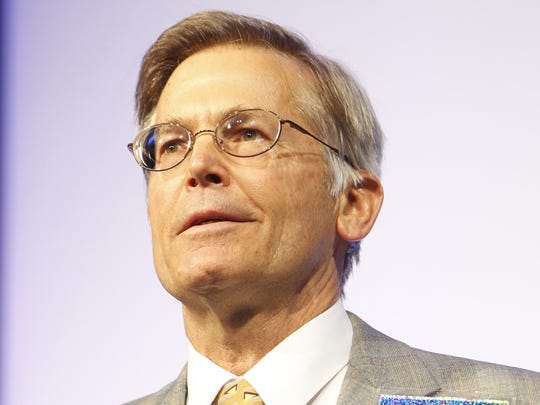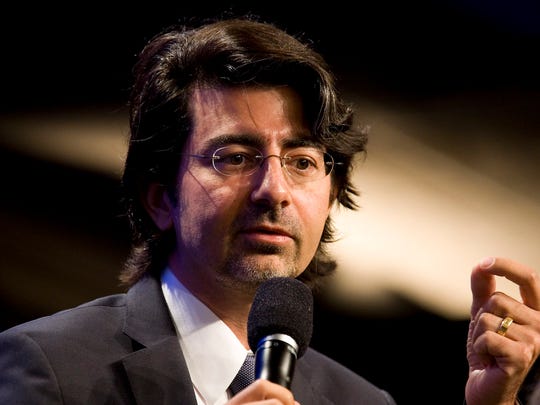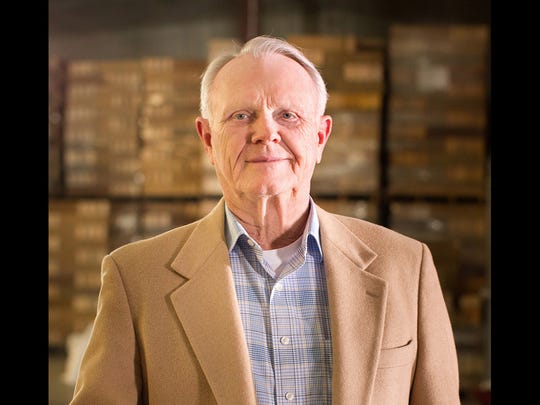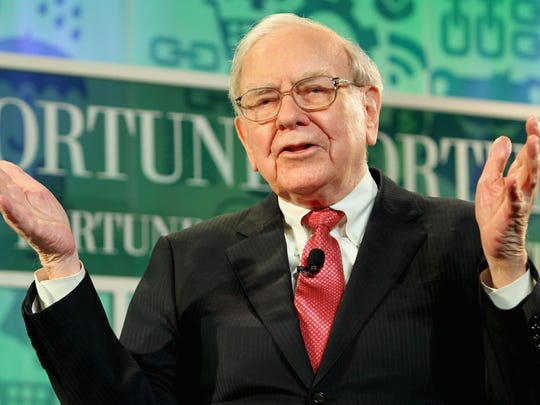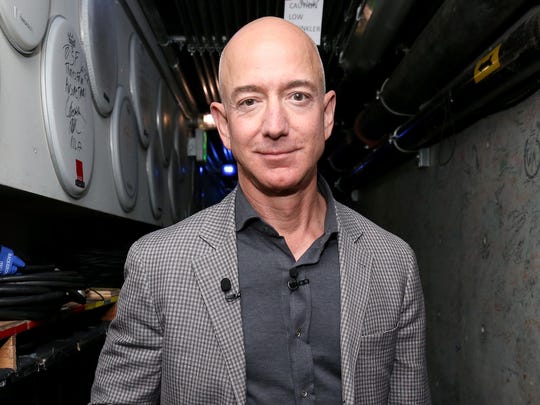
Image source The Motley Fool.
MISTRAS Group Inc (NYSE:MG)Q4 2018 Earnings Conference CallMarch 12, 2019, 9:00 a.m. ET
Contents: Prepared Remarks Questions and Answers Call Participants Prepared Remarks:
Operator
Good morning, ladies and gentlemen. My name is Liz, and I'll be your event manager today. We'll be accepting questions after management's prepared remarks.
One moment, please, while I pass the call over to MISTRAS Group Director of Marketing Communication.
Nestor S. Makarigakis -- Group Director, Marketing Communications
Welcome to the MISTRAS Group conference call for its fourth quarter and full-year results for 2018. My name is Nestor Makarigakis. Participating on the call for MISTRAS will be Dennis Bertolotti, the company's President and Chief Executive Officer, Ed Prajzner, Senior Vice President, Chief Financial Officer and Treasurer, as well as Dr. Sotirios Vahaviolos, Executive Chairman; and Jon Wolk, Senior Executive Vice President and Chief Operating Officer.
I want to remind everyone that remarks made during this conference call will include forward looking statements. The company's actual results could differ materially from those projected. Some of those factors that can cause actual results to differ are discussed in the company's most recent annual report on Form 10-K and other reports filed with the SEC.
The discussion in this conference call will also include certain financial measures that were not prepared in accordance with US GAAP. Reconciliation of these non U.S. GAAP financial measures to the most directly comparable U.S. GAAP financial measure can be found in the tables contained in yesterday's press release and in the company's related current report on Form 8-K. These reports are available at the company's website in the Investors section and on the SEC's website.
I will now turn the conference over to Dennis Bertolotti. Dennis?
Dennis M. Bertolotti -- President and Chief Executive Officer
Thank you, Nestor, and good morning, everyone. During today's call, we will give you an update on MISTRAS' business performance, financial results for the fourth quarter and year ended December 31, 2018, as well as give you our outlook for 2019.
Full-year revenues were a record, and up 6% over 2017 to $742.3 million. Revenue growth was driven by a combination of acquisitions and organic growth, which was about 1.5%, but was actually much stronger, considering we overcame the non-renewal of a large contract and divested operations.
Margin performance was even stronger, as the revenue we added organically and through acquisitions has been from more profitable operations, which is a corporate priority as we evolve our business. Adjusted EBITDA was up 15% for the year, with adjusted EBITDA margin expanding nicely from a year ago. This was driven by an expansion in gross margins, which have been steadily increasing over the course of fiscal 2018 and reached the three-year high of 28.9% in the fourth quarter.
Ed will go through the detail. We had several and frequent charges in the fourth quarter, which was a major reason adjusted EBITDA was slightly below our 2018 guidance.
While our financial performance was strong, more importantly, we made significant progress toward realizing our vision, executing on our strategy to achieve more sustainable growth, both organically as well as from acquisitions, as well as leveraging our increased revenue to grow earnings even faster. The core business is strong. We were able to grow revenues by $40 million over the course of the year despite absorbing a $30 million reduction in revenues, commencing back at the beginning of the second quarter in 2018.
I think this speaks volumes to our strong product offering and industry relationships, and clearly illustrates that our Services remain in great demand and we continue to improve our capabilities. This includes new digital initiatives that leverage technology to improve performance and quality while reducing costs. From tablets in the field to Onstream centralized data analytics facility, we are finding ways to leverage technology to provide our customers with more value and in a more rapid manner.
International is also doing very well. Aerospace is a growing market, and our aerospace business is proceeding on plan and expanding, with new parts and added volume as we deploy new capital expenditures. We also expect to see a pickup from West Penn volumes in the US market.
Products and Systems revenues were also up for the year, again despite the loss of revenues arising from the disposition of an underperforming product line in 2018. Since acquisitions are an integral part of our growth strategy, I wanted to provide some insight as to the success we have achieved with two of the company's largest ever acquisitions.
West Penn was a strong contributor to fiscal 2018 success. Their non-destructive testing capabilities are unsurpassed, and they are a partner to many companies in the aerospace industry that rely upon them for the valuable service they offer. This enables them to generate margins higher than that of field operations.
Growth in the aerospace market is one of our corporate objectives, and the outlook for the industry continues to be strong, which we expect will benefit West Penn in 2019 and beyond. Onstream has only been part of the MISTRAS family for three months. However, it is already clear that this is going to be a strong pillar of our overall growth strategy.
Onstream provides a number of benefits that leverage our competitive advantages and core competencies, while offering complementary capabilities that will facilitate rapid expansion into adjacent markets. Their strong presence in in-line inspection provides a strong foundation within the midstream oil and gas market, which is significantly less volatile than our traditional base.
As one example, at a recent tradeshow, the MISTRAS Onstream team generated a significant number of new business opportunities through introductions of our in-line inspection capabilities to existing midstream MISTRAS customers. Our most recent acquisition Onstream is also expanding their capabilities, and is now in the process of taking orders using their new 16-inch tool. We are also commencing commercialization of their 20-inch tool, with their larger 24-inch tool expected to be ready later in the year.
The addition of three new inspectable pipe diameters means our addressable market will have been dramatically increased. Perhaps, the most exciting aspect of the Onstream acquisition is their innovative application of advanced digital technology. This fits hand in glove with our vision for the NDT industry, which we see evolving from its traditional roots in inspecting and reporting, to its role as a strategic activity for anticipating and predicting asset risk.
This is a key element of our MISTRAS digital solution as well, as we've been mentioning over the past year. We'll have more to share regarding our specific ongoing pilots over the next few quarters. Onstream is well down the digital road and is already able to digitally send data from the field to their central lab in Calgary for reporting and analysis.
Our Plant Condition Management Software, or PCMS, is undertaking similar technology applications. This is what the industry wants and this is where we are headed, is being driven not only by a recognition of how this technology can reduce costs over the long term and also by increasing regulation that is consistently raising asset integrity standards.
Getting better information and faster, that can help predict when and to what degree an asset may be at risk is an attractive value proposition. We already have a solid foundation and over the next several years, you'll see us continue to enhance and expand this capability across the many vertical industries we serve. This will be a much faster-growing market, and MISTRAS intends to be at the forefront of this evolution.
With that, I would now like to turn the call over to Ed for a detailed review of the financials.
Edward J. Prajzner -- Senior Vice President, Chief Financial Officer and Treasurer
Thank you, Dennis. It was a very good operational year for MISTRAS Group, as the various initiatives and programs implemented over the year resulted in record revenues and significant margin expansion across all segments.
Looking first at results for the year. On a consolidated basis, revenues were up 6% to a record $742 million, driven by a similar 6% revenue increase in our largest segment, Services, which comprises 77% of our total 2018 revenue. More broadly, the increase was due to both, acquisitions and organic growth, which was up approximately 1.5%, more than earning back the $30 million of revenue losses Dennis mentioned.
Consolidated gross profit for the full year was $208 million, about 11% higher than the prior year. Consolidated gross margin for the full year was 28%, compared with 26.8% in the prior year, an increase of 120 basis points. Reflecting the broad-based improvement across the company, for the year, all three segments expanded their gross margin and grew their gross profits.
Margin expansion reflects a more favorable service and product mix, which in turn reflects a more disciplined growth strategy, selective pruning of underperforming operations and contracts, and an acquisition strategy focused on higher-margin businesses.
Adjusted EBITDA was up 15% for the full year to $73.5 million, with all of our segments again generating a year-on-year increase. As Dennis mentioned, we did have a number of infrequently occurring items during the fourth quarter, particularly in late December, which reduced adjusted EBITDA by approximately $2.5 million. This included operating items, such as an earlier than anticipated completion of a turnaround and an unexpected weather-related slowdown, as well as non-operating item such as Onstream-related financing costs and other legal and statutory expenses.
The company generated $41.7 million of cash flows from operating activities and $20.5 million of free cash flow for the full-year 2018. As anticipated, we had a strong improvement in cash flows in the fourth quarter relative to the first nine months of 2018, with $17.5 million of cash from operations and $12.1 million of free cash flow generated during the fourth quarter of 2018. This positive trend has continued into the beginning of 2019, driven by working capital reductions. We foresee continued improvement throughout 2019.
Looking at the fourth quarter, we finished the year strong. Although revenues were somewhat lower than a year ago, we were comping against Services strong year ago quarter. More importantly, gross margins expanded to 28.9%, the highest quarterly margin in three years.
Looking more closely at our segments. Services revenue decreased by 4% in the fourth quarter. This was primarily due to Services comparing against a very strong year ago quarter, wherein customers were completing deferred maintenance. For the year, revenues increased by $31 million or 6%, attributable to acquisition as well as modest organic growth.
If you consider this, $30 million of revenue growth was accomplished after essentially backfilling $30 million of revenue from a contract that had been part of our underlying revenues in 2017. You can see why we believe Services had a very strong year and remains one of the industry's premier providers.
Services segment turned in a gross profit margin of 27.4% for the quarter and 26.4% for the year, improvements of 90 basis points and 80 basis points, respectively, compared to the same period a year ago.
Margin expansion is a key corporate strategy, and we are pleased to see margins continue to expand, driven by pruning lower-margin operations and growing higher-margin operations, including acquisitions such as West Penn and Onstream.
International revenues in the fourth quarter were down 2% from a year ago, although up in local currency. For the year, revenue increased 6%, and was due to the combination of organic growth and a favorable foreign exchange translation.
For the quarter, International reported a 30.1% gross margin, which is up 570 basis points from a year ago and a full-year gross margin of 29.6%, an increase of 260 basis points. This improvement is attributable to better manpower utilization, improved sales mix and growth in aerospace. As mentioned last quarter, the winding down of the German staff-leasing business will present a headwind to International and fiscal 2019.
Products and Systems revenues were down slightly in the fourth quarter, but were up modestly for the year, despite this segment having divested a product line earlier in 2018. Products and Systems gross margins came in at 46.5% for the fourth quarter and 45.1% for the year, improvements of 750 basis points and 300 basis points, respectively.
SG&A as a percentage of revenue was approximately 24.4% in the fourth quarter of 2018 and 21.1% in the fourth quarter of 2017. There were a number of infrequent charges booked in the fourth quarter, as well as a deliberate increase in our sales and marketing investment as a strategy to accelerate growth. For the year, SG&A was 22.4% of revenues compared to 21.8% in fiscal 2017.
Outside of some nominal growth in sales and marketing, as well as an increased investment in research and development, we expect any increase in overheading (ph) to generally fall below the rate of revenue growth in fiscal 2019. Operating income was $2.5 million for the fourth quarter of 2018, and $22.2 million for the full-year 2018. Non-GAAP operating income was $5.4 million for the fourth quarter of 2018 and $31.7 million for the full-year 2018.
GAAP net loss was $1.1 million, or $0.04 loss per diluted share for the fourth quarter of 2018, compared to GAAP net income of $900,000 or $0.03 per diluted share in the prior year. The loss in the current year quarter was largely due to an exceptionally high income tax rate attributable to primarily adverse items related to the Tax Reform Act of 2017.
For the year, we reported GAAP net income of $6.8 million, or $0.23 per diluted share, whereas we had a GAAP net loss in fiscal 2017 of $2.2 million or $0.08 per diluted share, primarily due to a $16 million impairment charge recognized in fiscal 2017.
On a non-GAAP basis, we had $16.1 million of net income, or $0.55 per diluted share for full-year 2018, compared to $12.7 million, or $0.43 per diluted share in the prior year period. This represents a 26.8% and 27.9% increase, respectively, in these metrics for full-year 2018 over 2017.
The company generated $41.7 million of cash flows from operating activities and $20.5 million of free cash flow for full-year 2018. For fiscal 2017, we had a positive $8 million in operating cash flow from a reduction in working capital, whereas this year, the change in working capital was a negative $9 million to cash flow.
As anticipated during our third quarter conference call, working capital did improve and was a meaningful reason cash flows from operating activities was a very strong $17.5 million for the fourth quarter 2018. We still have room for further improvement, which we expect to see throughout 2019.
The New Year is, in fact, off to a good start, with strong cash flow so far during the first quarter of 2019. Interest expense for the quarter rose to $2.4 million. Based on the debt added with the Onstream acquisition, offset by repayments we anticipate in 2019, we believe total interest expense for fiscal 2019 should be in the range of $12 million to $14 million. We closed out 2018 with $25.5 million of cash on hand compared to $27.5 million at the end of last year.
The company's net debt, defined as total debt, less cash and cash equivalence, was $265.2 million at December 31, 2018, compared with $139.3 million at December 31, 2017. This increase in net debt was primarily attributable to the Onstream acquisition, which closed during the fourth quarter of 2018.
Given our cash flow, annual cash interest expense and net debt, we believe our balance sheet is strong and will support the funding of both our organic and any acquisition growth objectives. Income tax expense was exceptionally high in 2018 due to a number of factors, the primary one being certain adverse impacts of the Tax Reform Act of 2017, which drove the rate year-to-date up to slightly over 50%. For 2019, we expect the effective tax rate to be in the range of 32% to 35%.
And with that, I will now turn the call back over to Dennis.
Dennis M. Bertolotti -- President and Chief Executive Officer
Thank you, Ed. I will conclude with our preliminary outlook and guidance for 2019. Our North American oil and gas customers suggest that their spending in 2019 will improve over 2018. And I'm optimistic about our growing aerospace and complementary mechanical services business, and excited about our growth plans to expand further into the midstream segment by leveraging our industry experience and technological know-how.
Given the opportunities ahead, we expect to more than compensate for the known challenges and foresee on a full-year basis for 2019 an outlook with total revenues expected to be between $765 million to $785 million, adjusted EBITDA expected to be between $90 million and $93 million. Capital expenditures are expected to be up to $25 million and free cash flow expected to be between $42 million to $45 million.
Please keep in mind that our progress in year-over-year comparable won't, however, be linear throughout 2019, because of the first quarter of 2019 lapping a year ago quarter, that included more than $10 million of Services revenue from the large former customer site. And beginning late in the first quarter of 2019, we commenced the exiting of the staff-leasing business in Germany, representing a further reduction of approximately $13 million in revenue in full-year 2019.
We are nevertheless confident that we can essentially offset the earnings effect of the revenue decreases through continuing margin expansion, particularly in our Services segment, as we have demonstrated throughout 2018.
We stated at the beginning of last year in our guidance outlook for 2018 that we would offset the annualized revenue loss of $40 million that anniversaries in a few short weeks, and have net organic revenue growth for full-year 2018. I'm proud to say that we achieved and actually exceeded that goal. On the whole and over the longer term, we believe macro level economic drivers will remain positive and we are confident in maintaining our forward momentum.
We will now take your questions. Operator, please open the phone lines.
Questions and Answers:
Operator
(Operator Instructions) Our first question comes from the line of Edward Marshall with Sidoti & Company. Your line is now open.
Edward Marshall -- Sidoti & Company -- Analyst
Good morning, guys. How are you?
Dennis M. Bertolotti -- President and Chief Executive Officer
Great. Thanks, Ed.
Edward Marshall -- Sidoti & Company -- Analyst
So, I wanted to ask about what the assumptions are for revenue, looking at, I guess, there is a lot rolling off, some acquisitions coming in. So, if you can kind of give us a sense as to the organic growth rate of revenue baked into your 2019 guidance, I'd appreciate that.
Edward J. Prajzner -- Senior Vice President, Chief Financial Officer and Treasurer
Hi, Ed. It's Ed here. Yeah, there is some, if you pull off the last quarter of the troubled region and then the German staff leasing, that's about $24 million. We had that small product segment divestment as well of $3 million in the year. So if you kind of normalize that and then add in Onstream, you're looking at, our outlook has a range of maybe 2% to -- up to 4%, 5% kind of organic growth, kind of assumed in there.
Edward Marshall -- Sidoti & Company -- Analyst
Okay. Okay. So the next question is, I think you mentioned in your prepared remarks about SG&A and in the particular quarter, I mean, it was heavier than the rate for the majority of the year. What happened in Q4 and then what's the anticipation for 2019, if you can elaborate a little bit more?
Edward J. Prajzner -- Senior Vice President, Chief Financial Officer and Treasurer
Sure. Yeah, that did go up sequentially. We were about $42 million in Q3, $44 million in Q4. As we mentioned, there was a number of infrequent items there. About a $1.5 million of that in Q4, there was -- they are not recurring. There was some non-capitalized financing costs, couple of statutory charges and some bad debt expense. We recorded about $1.5 million.
If you took that out, you could -- if you add about $42.5 million, that's a pretty good number to annualize, maybe $43 million a quarter into next year. That's pretty close to our year-to-date. Our year-to-date is 22.5%. So, that's not a bad percentage to be thinking about for '19.
Edward Marshall -- Sidoti & Company -- Analyst
And thinking about the one stream (sic) (Onstream), were the intangibles at all in the Q4 number? I don't think it would be, maybe a couple weeks of.
Edward J. Prajzner -- Senior Vice President, Chief Financial Officer and Treasurer
Very little. Maybe just the two weeks post the acquisition. So, there was very little activity in the P&L for '18 relative to Onstream.
Edward Marshall -- Sidoti & Company -- Analyst
So, are you planning to materially bring other SG&A costs down to absorb some of those intangibles that might roll through on SG&A as I start to think about next year?
Edward J. Prajzner -- Senior Vice President, Chief Financial Officer and Treasurer
This is not so much a cost-out synergy type of acquisition that their SG&A will be additive to ours, but obviously, we're always looking to ratchet down costs and minimize the footprint. But there -- we think of their amortization clearly as being additive.
Edward Marshall -- Sidoti & Company -- Analyst
Got it. And what are you seeing from a wage inflation as the industry improves? I mean, how's wages look out as -- how are you being able to pass those wages off to customers, et cetera, through price increases?
Dennis M. Bertolotti -- President and Chief Executive Officer
Yeah. Dennis here. It's still more regional than it is across the board. But we haven't seen any pushback from customers not willing to accept increases because the industry is actually getting pretty heavy in '19 or later half of '19. Stream is probably going to be a little bit lighter than you would see typically. It's going to be about an average spring, but we think the fall is going to be heavier.
So, customers know that there's a lot of regional fighting for labor and skilled labor size. So, they are willing to talk to us about doing a pass through on these things now that -- what they're going to do is they're going to allow it to be pass through and be pass through for the labor in Gulf Coast, west, many regions where they're getting tight.
Edward Marshall -- Sidoti & Company -- Analyst
Last, I want to follow up on the -- last statement about the spring versus the fall. Is that an anticipation of back ending their CapEx or their spend, their maintenance spend to the back half of the year to make sure that they did kind of get a wait and see throughout the year or is it just timing? Is it -- any comments that you could add to that statement about the average spring versus a heavier falling would be helpful?
Dennis M. Bertolotti -- President and Chief Executive Officer
Yeah, I guess, comparatively, when you look at last year, I think there was a lot of catch-up activity going on, more so than this is a wider spring. It does seem to be a little bit later in the year. It does seem like it is happening more in late February and March and April. Sometimes in the year, there's a lot of activity, January, February, we're not seeing that as much. So, I don't know if that's a capital planning or it's just the way the projects are rolling out.
Edward Marshall -- Sidoti & Company -- Analyst
Got it. Thanks very much for your comments. I appreciate it.
Dennis M. Bertolotti -- President and Chief Executive Officer
Yes.
Operator
Our next question comes the line of Tahira Afzal with KeyBanc. Your line is now open.
Tahira Afzal -- KeyBanc Capital Markets -- Analyst
Hi, Dennis and Ed. Hope you are well.
Dennis M. Bertolotti -- President and Chief Executive Officer
Morning.
Tahira Afzal -- KeyBanc Capital Markets -- Analyst
Morning. So folks, as you look at Onstream and you talked a lot about the addressable market and as you bring in the wider pipe to that market, TAM is essentially going up. So, can you kind of talk about how much that addressable market is going up by, as you bring in the new tools? Is it like doubling in size over the next five years or am I being too optimistic?
Jonathan H. Wolk -- Senior Executive Vice President and Chief Operating Officer
Hi, Tahira. It's Jon. I'll take that one. So, we have sized. We've been -- people helped us size the North American in-line inspection opportunity at roughly $0.75 billion per year. And Onstream, at the time of acquisition, probably addresses about, let's say, up to about 30% to 40% of that market and at the time of acquisition. And we believe that with the tools that Onstream is introducing to the market both in 2019, as well as on the drawing board over the next couple of years that will be able to address at least two-thirds of that market size.
Tahira Afzal -- KeyBanc Capital Markets -- Analyst
Okay.
Jonathan H. Wolk -- Senior Executive Vice President and Chief Operating Officer
And we expect the market to grow as well.
Tahira Afzal -- KeyBanc Capital Markets -- Analyst
So, I mean, is it conceivable between this tool and your traditional business because there has been potentially some pent-up spending likely? It seems like even yourself (ph) were a little more conservative, are optimistic about the oil and gas customers picking up spending. Is it conceivable organically, we could see growth in the high single-digits for that business from a two-year to three-year perspective?
Dennis M. Bertolotti -- President and Chief Executive Officer
Yes, Tahira. We're certainly playing on that. Our underwriting thesis was certainly that we believe Onstream will grow organically, at least in the high single-digits per year.
Tahira Afzal -- KeyBanc Capital Markets -- Analyst
Got it. Okay. And then just in terms of margins. Obviously, you're going to be very specialized in that business. As you cover that with a more traditional business, is there a marginal pricing opportunities for yourself?
Dennis M. Bertolotti -- President and Chief Executive Officer
I think there is a marginal price opportunity in there because Onstream is a terrific service provider, delivers reports to customers much sooner than at the industry standard. It is pretty nimble in terms of organizing to suit client needs and so forth, and tends to be value priced to an extent. So, there is a pricing opportunity that is implied in there, yes.
Tahira Afzal -- KeyBanc Capital Markets -- Analyst
Got it. Okay. And then just wanted to circle back on Safran. Clearly, there is Boeing been in the news with the 737 Max. I know Safran has some exposure there. Is this potentially a positive development for yourselves or will there be more testing in fuselage integrity needs are -- do you see this as net neutral to your business ?
Dennis M. Bertolotti -- President and Chief Executive Officer
Tahira, it's Dennis. I mean, I think it's very early from what we see, this might be more of a safety device or something other than an aerospace propulsion issue. Certainly if it became something what I've seen and engine component fail or some critical structure be part of the scenario, then absolutely more testing would be involved. Right now, it's too early to say.
I will say -- so, I mean, we're not sure on that. I will say one thing. I mean, we picked the aerospace, mechanical and pipeline markets for our growth in the near future and we see all three really still performing well. So, West Penn, Safran, and all of our aerospace growth we see as being good. Onstream fits inside the pipeline and even mechanical blowing over. So the three that's been our pillars, we still see as being very, very aggressive in the next couple of years and a chance for us to really maybe outperform a lot of what you would think in normal oil and gas or other aerospace markets, right?
Tahira Afzal -- KeyBanc Capital Markets -- Analyst
Okay. That's actually good to hear. Last question for me, Dennis. One of your peers has already started talking a bit more about taking some of the inspection tools and technologies, and applying them to the upstream space of oil and gas. And it's an area you guys doubled in. Seems from all the customer calls that I've been listening to, that's a great opportunity over there. Any thoughts about that or would you rather just digest all the initiatives that are currently in place?
Dennis M. Bertolotti -- President and Chief Executive Officer
Well, I'm really not familiar with the one you're talking about. But what I can tell you from our point of view, we do see there is possibilities of growth for us in upstream or anywhere else in the oil and gas through our digital capabilities. We're trying to grow this digital to become a value player and find ways to save money and be more efficient.
So, I'm not sure if that's the company, if that's kind of the idea that the other company is looking at.
Tahira Afzal -- KeyBanc Capital Markets -- Analyst
That is.
Dennis M. Bertolotti -- President and Chief Executive Officer
But what we are looking at is more efficient we can become and give data to them quickly and smartly and something they can react on very quick in the field versus weeks or days later so much the better. So, we definitely are going down that path. Somebody else, I can't speak to but --
Tahira Afzal -- KeyBanc Capital Markets -- Analyst
Got it, Dennis. That's actually helpful. Thank you.
Dennis M. Bertolotti -- President and Chief Executive Officer
Okay. Thank you.
Operator
Our next question comes from the line of Chip Moore with Canaccord. Your line is now open.
Chip Moore -- Canaccord Genuity -- Analyst
Yeah. Morning. Thanks. Hey, guys.
Dennis M. Bertolotti -- President and Chief Executive Officer
Good morning, Chip.
Chip Moore -- Canaccord Genuity -- Analyst
I guess, on Onstream, now that you've had them for about three months or so, can you talk about accelerating their presence in the US in the sales? How do we think about investments to help accelerate that and timing?
Jonathan H. Wolk -- Senior Executive Vice President and Chief Operating Officer
Yeah. Hi, Chip. This is Jon. We are really -- and Onstream shares our excitement in the US growth that Onstream is starting to experience now. And more importantly, the potential market that's out there. Now, Onstream really has earned its reputation and grown to its present size largely on the back of a Canadian market that is about 30% the size of the total North American market.
And as we think about the applicability of Onstream in the United States, there's lots of opportunity. What we're doing is focusing and focusing on our path to make sure we don't try to boil the ocean. But we're very excited about the uptick that we're seeing and the potential that exists.
Dennis M. Bertolotti -- President and Chief Executive Officer
Chip, it's Dennis. Our recent growth in PCMS and many other platforms prior to Onstream were in actually midstream. So, we have a lot of connections and customers in the US market that we always felt would be a very strategic benefit for us to help them grow in the US.
And just like, when we tried to go into Canada, it took us a while to kind of understand and know what that market is about and how to best work within it. It would take them a similar type time to understand. the US market. We have the ability to put them in every place that they need to be. Every zone that they're looking at, we have people and customers already in.
Edward J. Prajzner -- Senior Vice President, Chief Financial Officer and Treasurer
And Chip, it's Ed. You mentioned the investment there. We have scaled up the CapEx. We've been running at $20 million last couple of years. So, we are envisioning up to maybe $25 million this year for CapEx, fairly modest in the greater scheme, but this is not going to require a major CapEx to expand into the US.
Chip Moore -- Canaccord Genuity -- Analyst
Got it. That's great, guys. And maybe if I flip over the balance sheet, obviously, leverage stepped up with the deal. I think you talked about more of a focus on tuck-ins. How do we think about dry powder and pay down on the debt?
Edward J. Prajzner -- Senior Vice President, Chief Financial Officer and Treasurer
Hey, Chip. It's Ed. We ended the year at proforma about a 3.5 leverage. We would at this point, use free cash flow in '19 to pay down the debt. So if we didn't do any acquisitions, you'd probably get to a 2.75 or so by the end of the year.
So, we've got more than enough capacity. The current facility allows us a 4.0 (ph) leverage, so we can do the tuck-ins as they come along. But we're really focusing on the business at hand, what's in front of us here and the tuck-ins, as we focus on them, will happen but the balance sheet is there if we need it.
Chip Moore -- Canaccord Genuity -- Analyst
That's great. And maybe one last one on the outlook. Given some of the headwinds you called out in Q1 and where we stand here halfway through March, can you talk a little bit more directionally on Q1 at least, revenues, would you expect those to be up year-over-year? Or anything you can do to help us calibrate that? Thanks, guys.
Edward J. Prajzner -- Senior Vice President, Chief Financial Officer and Treasurer
Well, I mean, as the outlook kind of indicated, as we talked about it on the call, you're going to see kind of a growing into back end of the year. Again, we have some of that comparable challenges in the first quarter and second quarter. So, you'll see some strength into back end of the year. But we feel very good about the outlook and our ability to achieve.
Dennis M. Bertolotti -- President and Chief Executive Officer
Chip, it's Dennis. I think Q1 is going to be our struggle. I think two, three and four will probably come through with year-over-year growth. The percentages right now, I'm not so sure. I think they will build up from the second to the third as far as the growth year-over-year, but we think really Q1 is our really only struggle at this point.
Chip Moore -- Canaccord Genuity -- Analyst
That's great. Understood. Appreciate it. Thanks, guys.
Dennis M. Bertolotti -- President and Chief Executive Officer
You got it. Thank you.
Operator
I'm showing no further questions in queue at this time. I'd like to turn the call back to Dennis Bertolotti for closing remarks.
Dennis M. Bertolotti -- President and Chief Executive Officer
All right. Thanks, everybody. We appreciate your interest in MISTRAS. We look forward to updating you on our next call. We'd like to thank, everyone, for listening. And have a great day. Thank you.
Operator
Ladies and gentlemen, thank you for your participation in today's conference. This concludes the program and you may now disconnect. Everyone have a great day.
Duration: 35 minutes
Call participants:
Nestor S. Makarigakis -- Group Director, Marketing Communications
Dennis M. Bertolotti -- President and Chief Executive Officer
Edward J. Prajzner -- Senior Vice President, Chief Financial Officer and Treasurer
Edward Marshall -- Sidoti & Company -- Analyst
Tahira Afzal -- KeyBanc Capital Markets -- Analyst
Jonathan H. Wolk -- Senior Executive Vice President and Chief Operating Officer
Chip Moore -- Canaccord Genuity -- Analyst
More MG analysis
Transcript powered by AlphaStreet
This article is a transcript of this conference call produced for The Motley Fool. While we strive for our Foolish Best, there may be errors, omissions, or inaccuracies in this transcript. As with all our articles, The Motley Fool does not assume any responsibility for your use of this content, and we strongly encourage you to do your own research, including listening to the call yourself and reading the company's SEC filings. Please see our Terms and Conditions for additional details, including our Obligatory Capitalized Disclaimers of Liability.
 Mellanox Technologies (NASDAQ:MLNX) was downgraded by BidaskClub from a “strong-buy” rating to a “buy” rating in a research report issued on Wednesday.
Mellanox Technologies (NASDAQ:MLNX) was downgraded by BidaskClub from a “strong-buy” rating to a “buy” rating in a research report issued on Wednesday. Don't look now, but the alternative energy market has changed dramatically.
Don't look now, but the alternative energy market has changed dramatically.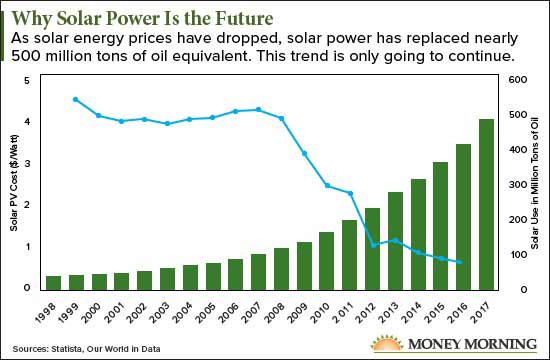
 system is well aware of this.
system is well aware of this. Element Solutions (NYSE:ESI) was downgraded by Zacks Investment Research from a “buy” rating to a “hold” rating in a research note issued on Wednesday.
Element Solutions (NYSE:ESI) was downgraded by Zacks Investment Research from a “buy” rating to a “hold” rating in a research note issued on Wednesday. 
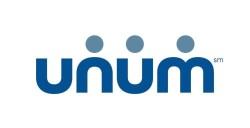 Equities research analysts expect Unum Group (NYSE:UNM) to announce earnings per share of $1.32 for the current quarter, Zacks Investment Research reports. Two analysts have issued estimates for Unum Group’s earnings, with the lowest EPS estimate coming in at $1.32 and the highest estimate coming in at $1.34. Unum Group posted earnings of $1.24 per share in the same quarter last year, which would indicate a positive year-over-year growth rate of 6.5%. The business is scheduled to report its next quarterly earnings results on Tuesday, May 7th.
Equities research analysts expect Unum Group (NYSE:UNM) to announce earnings per share of $1.32 for the current quarter, Zacks Investment Research reports. Two analysts have issued estimates for Unum Group’s earnings, with the lowest EPS estimate coming in at $1.32 and the highest estimate coming in at $1.34. Unum Group posted earnings of $1.24 per share in the same quarter last year, which would indicate a positive year-over-year growth rate of 6.5%. The business is scheduled to report its next quarterly earnings results on Tuesday, May 7th. Scharf Investments LLC lowered its position in shares of Aon PLC (NYSE:AON) by 5.4% during the fourth quarter, according to the company in its most recent Form 13F filing with the SEC. The fund owned 968,071 shares of the financial services provider’s stock after selling 54,743 shares during the quarter. AON makes up approximately 5.6% of Scharf Investments LLC’s holdings, making the stock its 2nd biggest holding. Scharf Investments LLC owned approximately 0.40% of AON worth $140,719,000 at the end of the most recent quarter.
Scharf Investments LLC lowered its position in shares of Aon PLC (NYSE:AON) by 5.4% during the fourth quarter, according to the company in its most recent Form 13F filing with the SEC. The fund owned 968,071 shares of the financial services provider’s stock after selling 54,743 shares during the quarter. AON makes up approximately 5.6% of Scharf Investments LLC’s holdings, making the stock its 2nd biggest holding. Scharf Investments LLC owned approximately 0.40% of AON worth $140,719,000 at the end of the most recent quarter. 